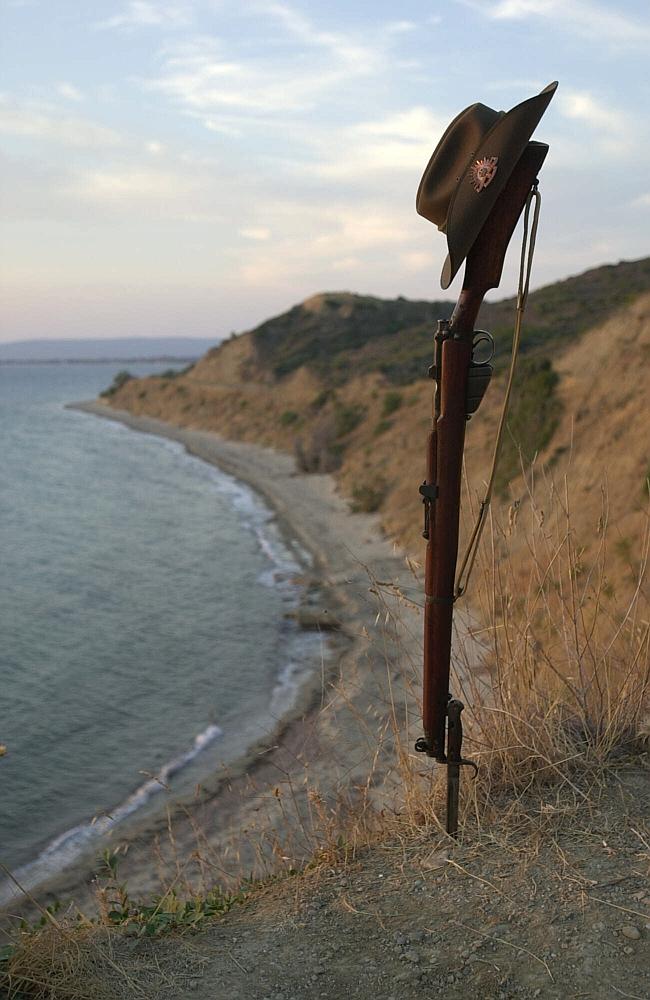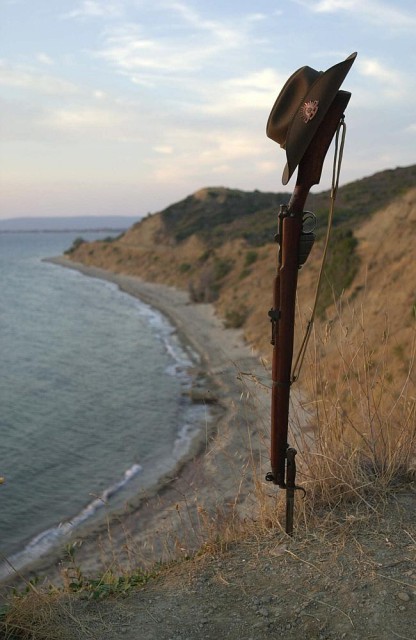On April 25th, 1915, the Aussie Diggers of the 12th Battalion landed on the beaches of Anzac in the Gallipoli Peninsula as covering force for the landings at Anzac. In the first few hours of the fight, a sniper shot and killed their commander Lt. Col L. F. Clarke, while the battalion continued on and later participated in the attack on Lone Pine. As the last to leave Anzac after their heroic efforts, they later took part in the first major battle in France at Pozieres in the Somme valley, fighting on at Ypres in Flanders and carrying on through to the battle of Amiens to finish out the war.
Over half the men of the 12th Battalion never went on to see the action after Anzac, having been killed or wounded as they took the worst casualties in that first campaign. “The Australians were fine. … They pulled in singing a song, ‘Australia will be there!’ and I could see them scaling the cliffs,” said a British officer who bore witness of the fighting. Ducit Amor Patriae (Love of My Country Leads Me) was their motto that carried them into harm’s way.
An emblem of the fight was found in 1990 after 75 years, the flag which had been carried ashore to be a rallying point for the battalion. Whether it was raised is not known, as the first company was immediately devastated by heavy machine gun fire the moment they disembarked onto shore. An English soldier found the flag and took it back to England, preserving it for the time when relatives found it and donated the relic to the Imperial War Museum in London. Restoration is now taking place, and out of many thousands of items stored in the museum’s repositories, the flag was chosen to be a part of the main exhibit for a permanent World War One exhibition, the news.com.au reports.
Lead Curator of the IWM’s First World War gallery, Paul Cornish describes the significance of the flag and the exhibit. “The flag is visually exciting and very much tells a story,” he said. “This tells a very obvious story about the Australia and New Zealand Army Corps entry into the war. Gallipoli was obviously the start of that whole process, the emergence of the nation, and of course the Australians pop up again in the section of the gallery to do with the Somme, another important element for Australia.” Full restoration of the flag is not being attempted. The intent is to preserve its present condition, allowing the stains of blood and grease and frayed edges to remain to testify to the events and the passage of time. Now future generations can learn of what took place, whose ancestors that experienced those events having long since passed.
Highlighting other exhibits, Manfred von Richthofen, known as the “Red Baron”, was shot down by Australian troops, parts of which are also on exhibit at the museum, as well as a German P08 pistol liberated by a Queenslander of the 5th Light Horse Brigade Regiment. Other Australian relics of the war on exhibit are uniforms and original recruitment posters, and photographs taken by Frank Hurley, the official Australian war photographer.

